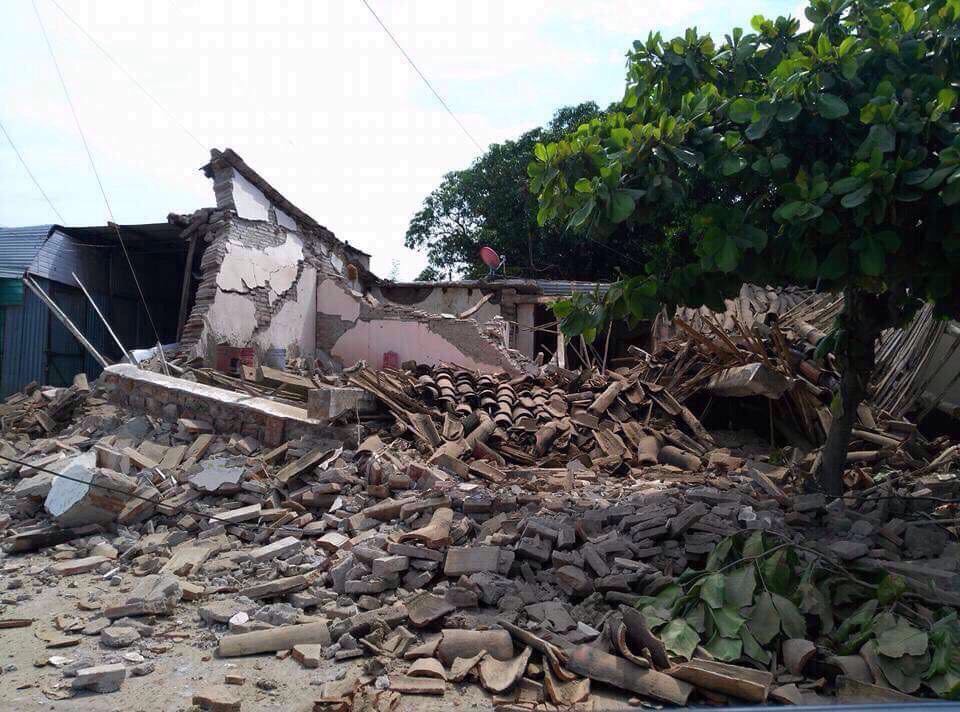In September 2017, a series of deadly earthquakes struck Mexico just 12 days apart, causing widespread devastation. One powerful quake hit central Mexico on September 19, becoming the deadliest in the country since 1985. The disaster occurred on the 32nd anniversary of the 1985 Mexico City earthquake that killed thousands of people. Just hours before the tremor, earthquake drills had taken place across the country.
2017 Mexico earthquakes: Facts, FAQs, and how to help
Here’s what you need to know about the earthquakes that occurred in Mexico.
- Fast facts: 2017 Mexico earthquakes?
- How big were the Mexico earthquakes?
- How much damage did the earthquakes in Mexico cause?
- How did World Vision respond to the Mexico earthquakes?
- How can I help survivors of disasters like the Mexico earthquakes?
Fast facts: 2017 Mexico earthquakes
- At least 225 people died after a magnitude 7.1 earthquake struck central Mexico.
- This earthquake comes on the heels of another magnitude 8.1 quake Sept. 7, 2017, that left more than 90 people dead and was the strongest earthquake to hit Mexico in a century. It struck off the country’s southwest coast, leveling buildings and causing mass evacuations.
- Then-Mexican President Enrique Pena Nieto declared three days of national mourning beginning Sept. 20, 2017.
How big were the Mexico earthquakes?
On September 7, 2017, a tremor measuring magnitude 8.1 shook Mexico, according to the USGS. About 50 million people across the country felt the seismic event. Local officials said they counted nearly 800 aftershocks, and USGS officials reported nearly 60 aftershocks with a magnitude of 4.5 or greater.
Days later, on September 19, 2017, an earthquake measuring 7.1 jolted central Mexico, according to the USGS.
“I heard this rumble in the walls, so I rushed downstairs,” said Victor Martinez, a World Vision emergency communications manager who had been based in Mexico City on September 19, 2017. “This quake was shorter than Friday’s (Sept. 7), but it felt much stronger. It felt as if the floor was jumping, like a vertical motion. People were really nervous. Then I drove to my nephew’s school to make sure they were okay and saw large amounts of people exiting buildings to pick up their children that were in school. I saw several cracks in the streets on my way to the school. As I listened to the local news, we were hearing about collapsed buildings.”

How much damage did the 2017 earthquakes in Mexico cause?
The 2017 earthquakes in Mexico devastated areas of the country.
- The September 19, 2017, earthquake, the most destructive, leveled scores of buildings and claimed hundreds of lives, including children from the Enrique Rebsamen School.
- An earlier temblor and its aftershocks on September 7, 2017, damaged or destroyed thousands of houses and hundreds of schools. More than 90 people were killed.
How did World Vision respond to the Mexico earthquakes?
World Vision staff had deployed where possible to assist with debris removal and coordinated with other response agencies to provide aid to impacted communities, said Silvia Novoa, World Vision’s then-national director in Mexico.
While World Vision did not have programming in communities affected by the September 19, 2017, quake, we did assist 12 shelters in Mexico City with the delivery of food and medicine to children and families. We also distributed approximately 3 tons of food, 500 tools, and two electric generators to support rescue efforts. In addition, World Vision established Child-Friendly Spaces to support children impacted by the disaster and worked with a team of volunteers, including doctors and psychologists, who offered medical care and emotional support to children affected by the earthquake.
“Our biggest concern is for children,” said Guillermo Lozano Leo, World Vision’s emergency response director at the time in Mexico. “Not only can they be terrified by such large quakes, but many families live in very poor-quality homes that are prone to collapse. We are closely monitoring the situation to find out how impacted areas nearest the coast are.”
One of the worst-hit areas was Juchitan in Oaxaca state, he said. World Vision had worked with churches and local government officials in the area and responded there as well.
How can I help survivors of disasters like the Mexico earthquakes?
You can help World Vision continue responding to disasters around the world, like the 2017 Mexico earthquakes.
- Pray: Join us in praying for children and families affected by devastating earthquakes and for World Vision staff and responders involved in relief efforts when these disasters occur.
- Give: Your gift to the Disaster Relief Fund can deliver hope and practical help to children and families when disasters like the Mexico earthquakes strike.

